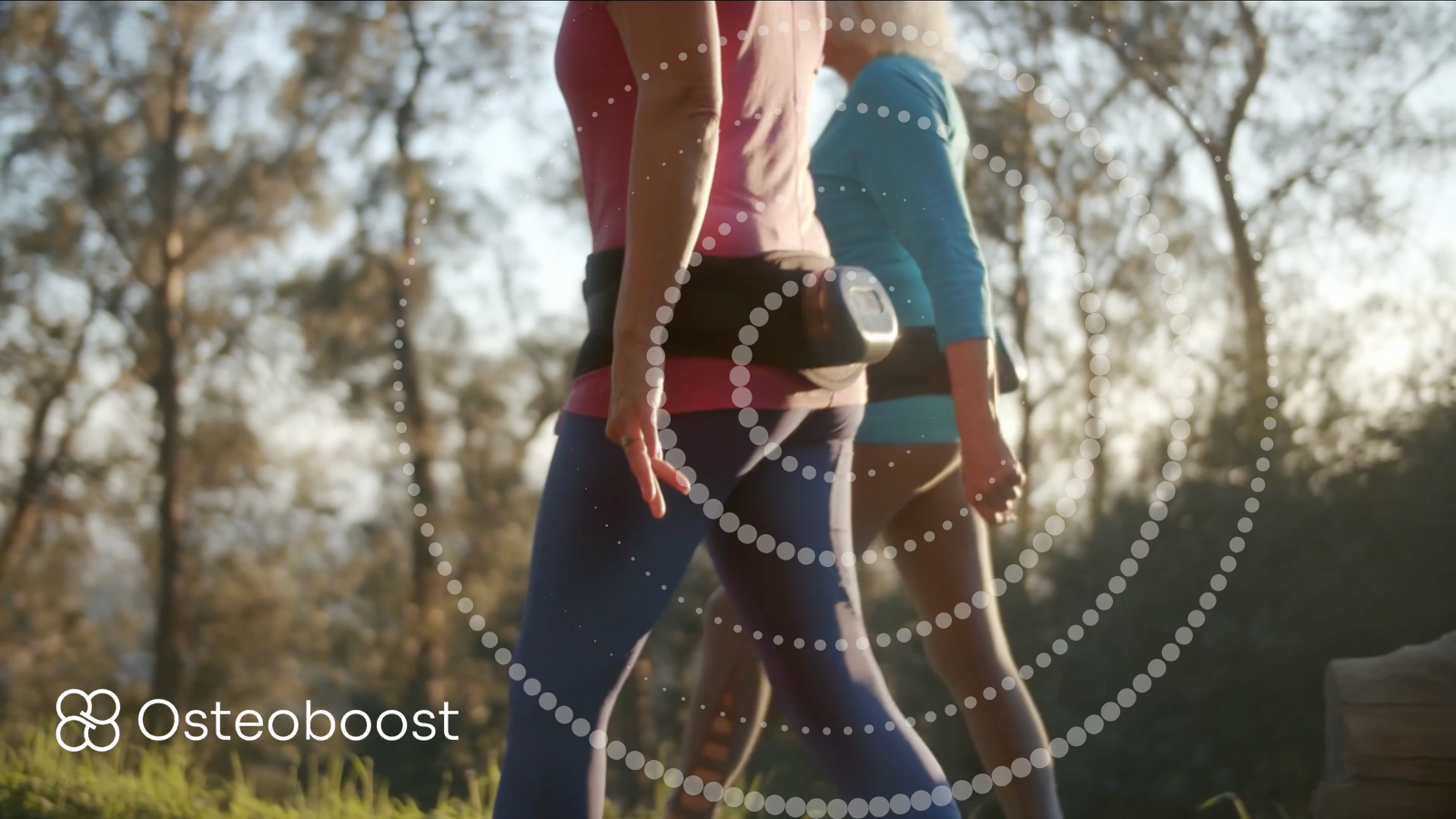In an age where women’s health and preventative medicine are beginning to converge, the need for reducing bone density loss in postmenopausal women has become a public health crisis. On average, one in two women older than 50 will experience an osteoporotic fracture. Bone Health Technologies (BHT) of Redwood City, California, recently announced that the FDA has granted clearance for the Osteoboost Vibration Belt, the first wearable prescription treatment device for postmenopausal women diagnosed with osteopenia (low bone density), a precursor to osteoporosis.
Osteoboost delivers targeted, calibrated vibration to the bones of the spine and hips, aiming to stimulate bone growth and reduce bone density decline. This breakthrough technology is safe, medication-free, and easy to use at home for as little as 30 minutes daily, making it a low-cost solution for a wide variety of patients with bone density loss. FDA clearance of Osteoboost creates an entirely new class of therapeutics for low bone density outside of pharmacological intervention.
 The company has achieved several milestones to support the development and commercialization of Osteoboost. In 2014, BHT was awarded a Phase I Small Business Innovation Research (SBIR) grant from the National Institute on Aging (NIA) and, in 2017, a Phase II SBIR grant. In 2021, the company received a Commercialization Readiness Pilot (CRP) grant of $2.7 million in non-dilutive funding. These grants have enabled the company to complete clinical studies demonstrating that Osteoboost reduces bone resorption activity and prevents bone loss in postmenopausal women with osteopenia.
The company has achieved several milestones to support the development and commercialization of Osteoboost. In 2014, BHT was awarded a Phase I Small Business Innovation Research (SBIR) grant from the National Institute on Aging (NIA) and, in 2017, a Phase II SBIR grant. In 2021, the company received a Commercialization Readiness Pilot (CRP) grant of $2.7 million in non-dilutive funding. These grants have enabled the company to complete clinical studies demonstrating that Osteoboost reduces bone resorption activity and prevents bone loss in postmenopausal women with osteopenia.
The real benefit of the two SBIR grants is that they provided funding for the proof-of-concept and for the pivotal trial. The CRP was critical to producing an improved version of the device…
Laura Yecies, CEO of BHT, states with confidence that “the product would not exist were it not for at least the first two [NIA SBIR] grants.” The real benefit of the two SBIR grants is that they provided funding for the proof-of-concept and for the pivotal trial. The third grant, the CRP, was critical to producing an improved version of the device that helped garner investment capital.
Osteoboost represents a significant advancement in the treatment of osteopenia. Funding for research on bone health therapies has diminished. Many pharmaceutical companies have exited the market for osteoporosis and osteopenia. Very few therapeutic advancements have been made specifically to address osteopenia that are non-drug, have little to no side effects, and have high rates of compliance. According to Yecies, “We have a failure of the market to invest and that’s where the public sector needs to step in.”
The NIH Small Business Program enables small businesses like BHT to pursue non-pharmaceutical therapies that tap into advanced technology. BHT, Yecies says, is looking to have a comprehensive solution, not just the Osteoboost belt: “We want to broadly solve the problem of bone density for everyone. We’re starting with an unmet need by addressing post-menopausal women with osteopenia, but our vision is broad.” BHT is currently applying for an SBIR grant for breast cancer treatment-related bone loss. The company is committed to finding solutions addressing therapeutic needs in all low bone density populations that have low side effects, are affordable, and are clinically effective.







